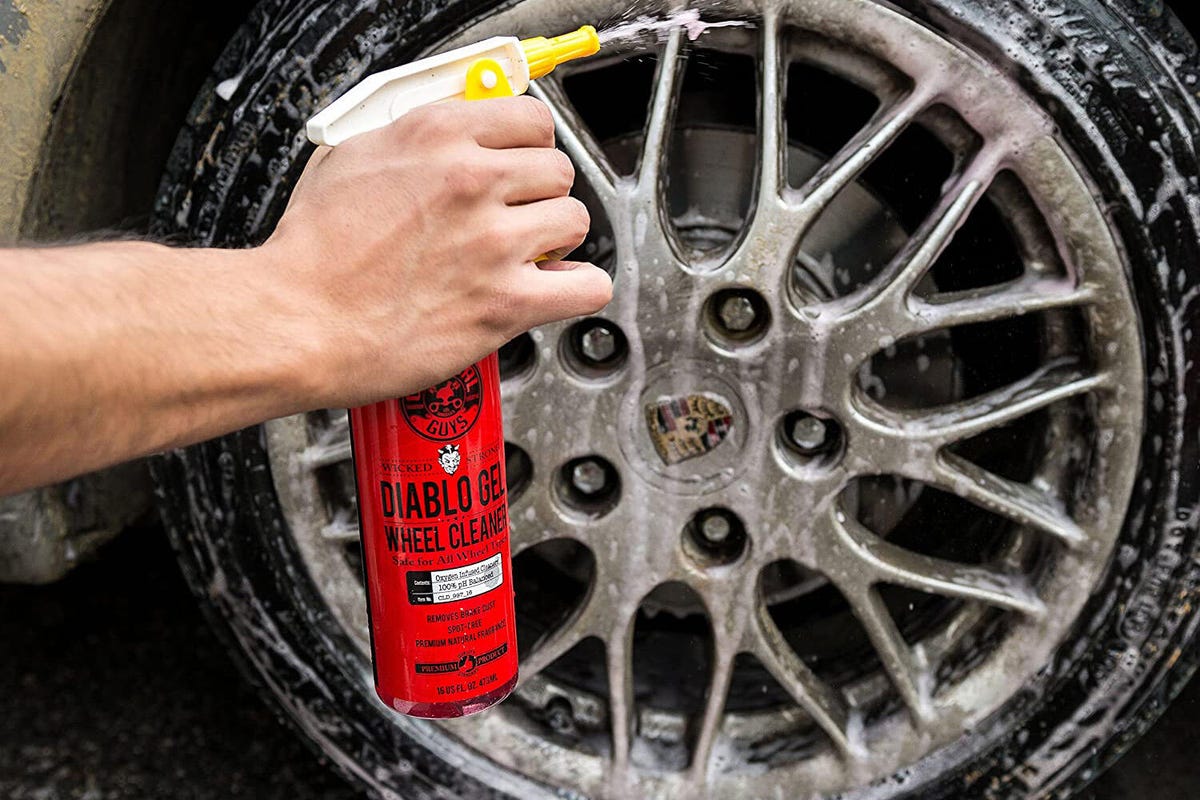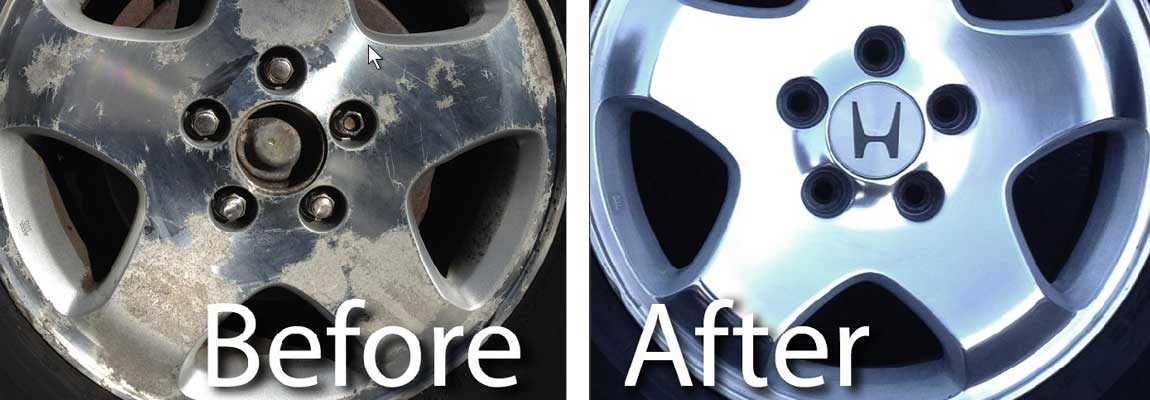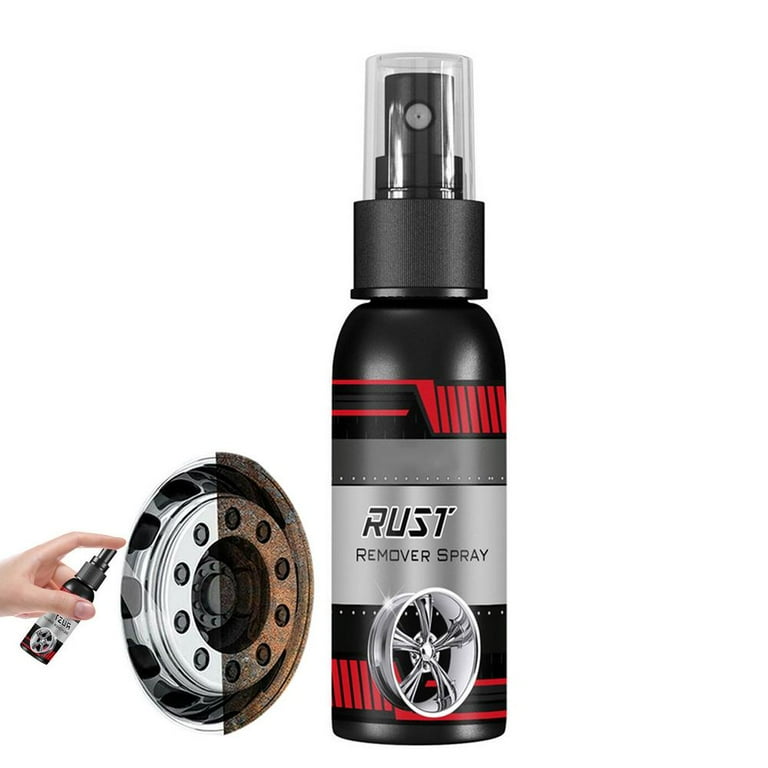Saddled with grungy gutters? Tortured by tales of your tarnished treads? No, this isn’t about plumbing or laundry, we’re deep-diving into the world of wheels. Specifically, alloy. These puppies are a key component in your vehicle’s attire. They have the ability to amplify your car’s appearance, and when they’re shining, believe me, they scream “perfection.” Now comes the real question – are you ready to roll up your sleeves and delve into the realm of alloy wheel cleaning and restoration?
Table of Contents
Understanding Alloy Wheels

Right out of the gate, let’s establish a crucial fact: alloy wheels are not just for show. Sure, they are considered cool, and they give your ride a custom look, but they offer more than just aesthetics. They’re lighter than steel wheels, which contributes to enhanced vehicle performance. Better acceleration, improved grip, and shorter stopping distances are all perks you can anticipate when switching to alloys.
Alloys get their name from the potent blend of metals they’re forged from. Typically, this includes aluminum, nickel, or magnesium. Aluminum is lightweight and highly aesthetic. Nickel toughens the wheel and enables it to withstand our not-so-gentle driving habits. Magnesium, funnily enough, is even lighter than aluminum and offers excellent heat dispersion — handy for those fiery brakes.
A quality alloy wheel offers a blend of these elements, creating a balance between durability and performance. The lower weight translates to less unsprung mass–which sounds awfully technical, right? This term refers to the portion of the car’s weight that isn’t supported by the suspension (think wheels, tires, brakes, etc.). Less unsprung mass equals a smoother, better nimble drive! It’s like road-cushioning magic.
Let’s also debunk some misconception: alloys are not immune to damage. They can pick up scrapes, scratches, and warps from potholes, curbs, and the elements. Unattended damage may lead to degrading performance and visual appeal. Hence, regular cleaning and maintenance are crucial.
So, we’ve captured the essence of alloy wheels and their indispensable part in vehicle performance. Apart from doling out that handsome custom look, the real magic of alloys is tucked in their grit, durability, and the subtle improvement to your driving experience. Next up? We take a nose-dive into the nitty-gritty of keeping them clean and shiny. Buckle up!
The Importance of Regular Cleaning

Alloys aren’t just there for the glitz and glam, they also serve a crucial purpose for your vehicle. However, they tend to be magnets for an array of grime like brake dust, moisture, dirt, and salt, all of which, if left neglected, can lead to a multitude of wheel issues. This grime doesn’t merely obscure the gleaming finish of your wheels; it can grind into your alloy wheels, causing corrosion and damage.
At the top of these issues is brake dust, an ironic nuisance generated each time you slow your ride down. Brake dust forms from tiny metal shavings that emanate from the rotor and brake pad friction and then finds solace on your wheels. These metal shavings, coupled with high heat, are rather corrosive. Whatever the source of filth, the longer it stays on, the more it etches into the surface of your wheels.
Meanwhile, for those of you in winter climates, know that salt is another notorious enemy of alloy wheels. Road salt can speed up the corrosion process, leading to pitted or peeling wheels. No respectable motorist wants to pull up to the next red light with pitted alloys.
And let’s not forget about moisture – the element of nature that pioneers rust. When you expose metal to moisture continuously, it won’t be long until your precious alloys start looking like they belong in a junkyard.
The way to wage war against these wheel woes is fairly simple: regular cleaning. A little soap, water, and elbow grease can go a long way in preserving the life (and shine) of your wheels. Plus, does it not just feel more righteous cruising around with clean, gleaming wheels instead of those marred by the tales of a thousand dirty roads? Regular cleaning is not just about maintaining appearances; it’s a mechanical and functional necessity. When done right, it can prevent costly repairs or replacements down the line and keep your alloys spinning right for miles.
Cleaning Tips for Alloy Wheels

Alloy wheels aren’t just about street cred and turning heads at your local mechanic, their performance benefits are real. They reduce unsprung weight and quicken steering response – but only if they’re clean and pristine like a chipmunk’s nest meticulously crafted from crispy French fries. So, how exactly do you ensure your alloys are gleaming brighter than a supernova in a coal mine?
Firstly, always make sure your wheels are cool to the touch before starting your cleaning journey. Hot wheels may cause cleaning supplies to evaporate and leave unsightly streaks faster than a track champion. Also, there’s nothing worse than a second-degree burn from a scorching hot rim. So, unless you’re planning on roasting marshmallows over your hot rims, let them chill first.
Next, you’re going to want to pedal to the metal with a pressure washer. Remove loose dirt and brake dust that’s settled into those hard-to-reach areas. Brake dust is like the bane of alloy wheels, it’s corrosive and adhesive making it a potent enemy. Wheel cleaner can help in breaking down the brake dust, but always choose a non-acidic cleaner to refrain from damaging the wheel finish.
After spraying the alloy cleaner, it’s time for some good ol’ fashioned elbow grease. Use a soft-bristled wheel brush that can reach into nooks and crannies, cleaning without scratching your precious alloys. Treat each spoke as an only child; give them attention, love, and caress them gently until they shine.
If you’re dealing with stubborn grime that sticks on your wheels like paparazzi on celebrities, you may have to take drastic measures—using a clay bar. Clay bars, synonymous with detailing, can help remove these stubborn contaminants without damaging your wheels. Overkill? Maybe. Effective? Absolutely.
Once you’ve finished scrubbing like a pirate’s lackey swabbing the decks, rinse your wheels off and dry them quickly. Any standing water can lead to water spots. A microfiber cloth is your new best friend, absorbing water fast and leaving a streak-free clean.
Finally, finish off with a wheel protectant or wax. This step not only makes your wheels shine brighter than Andromeda, but also forms a protective barrier against brake dust and other contaminants. It’s like an invisible force field for your alloys, repelling future grime and saving you on cleaning time.
There you have it – a recipe for achieving wheel nirvana. Follow these instructions, and your alloys will not only be the talk of the town but also run smoother than a buttered weasel on a waterslide. Happy cleaning!
Restoration Tips for Alloy Wheels

Restoring alloy wheels to their near-showroom glow typically requires moderately more elbow grease than you’d usually apply for a simple cleaning operation, but the results can justify the investment of time and effort. Restoration comes into play when your wheels exhibit a little more than the usual grime or dirt. We’re talking peeling clearcoat, discoloration, scrapes and other damage that can detract from the aesthetic appeal of the wheels.
For minor scratches, simple guides like a dedicated scratch remover put to use with a microfiber cloth can do wonders. Always make sure to use a dab of the product on an inconspicuous spot to confirm it won’t harm the wheel finish.
Deep scratches or gouges, meanwhile, may require a little sanding with high-grit sandpaper or a sanding sponge. It’s crucial to be careful during this process, sanding down just enough to smoothen out the surrounding area without overly eroding the original design of your wheel. Once the sanding process is complete, a primer and paint matching the color of your alloy wheels can be applied to restore the original appearance.
For restoration tasks that question your DIY skills, like curb rash or significant damage, it may be worth consulting a professional. These pros employ specialized tools and techniques to fix a wheel’s structural integrity and cosmetic appearance. Wheel restoration shops use machines to reform the wheel and blend away any blemish. Then they’ll repaint and seal it, making it look as good as new, if not better.
However, while the use of a professional alloy wheel refurbishment service may be unavoidable in some cases, prevention, as they say, is better than cure. Consistently maintaining your alloy wheels, applying protective layers, avoiding harsh conditions and chemicals, and optimizing your driving habits can ensure your wheels stay in top-notch condition, reducing the need for involved restoration efforts.
So go ahead, roll up those sleeves and get to work. Here’s to giving your alloy wheels the TLC they deserve, whether it’s minor cosmetic touch-ups or major restorative efforts. Let the bling of gleaming alloys become the envy of every passerby yet again.
Preventive Measures for Alloy Wheels

Before we delve into the art of brilliant wheel restoration, prevention is always the better part of valor. A few practical steps can save you the headache of ravaged alloys in the first place.
Alloy wheels aren’t just for show; they’re an investment. And like any investment, you want to protect your precious metal. The first line of defense against harmful elements is a good set of mudguards. They reduce the exposure of your wheels to road salts, grime, and pebbles, thus preserving the beauty and integrity of your alloys.
Another method would be to keep harmful chemicals at bay. When cleaning your alloys, avoid acidic cleaners that eat into your wheels, loosening their protective layer. Instead, shoot for pH-neutral cleansers. These solutions provide a powerful clean while preserving your alloys’ surface.
Simple as it may sound, reducing curb damage is one of the most efficient preventive measures. Being aware of your wheel positioning while parking or rounding corners can work wonders in preventing those agonizing scrapes on your precious rims.
Now, we all know that parking in a shaded spot is a proven trick to keep the car cool. But did you know it can also save your alloys, especially those with metallic finishes, from UV damage? Prolonged exposure to the sun can cause fading and discoloration.
Annual wheel alignment is another preventive measure worth considering. Misalignment can lead to premature tire wear, costing you not just tires but also scratched or damaged alloys. Take your car for regular wheel checks, and consider a wheel protection service to guard against brake dust, road salt, and other harsh elements.
Adding a layer of high-quality wheel sealant can also contribute to the longevity of your alloys. It acts as a barrier against oxidation, keeping the wheels shiny and new while making them easier to clean.
Lastly, consider seasonal tire changes. Run summer tires in warm seasons and change to winter tires when temperatures drop. This not just improves your vehicle’s performance but also reduces potential damage to your alloys caused by changing temperature and road conditions.
Remember, an ounce of prevention is worth a pound of cure. A hectic lifestyle might challenge you to cut corners, but protect your alloy wheels today to enhance their lifespan and avoid expensive restorations tomorrow.
FAQs
How often should I clean my alloy wheels?
If you’re one of those “wash my vehicle at every gas refill” types, then hey, knock yourself out, wheels included. But if you’re like the rest of us mere mortals, cleaning your alloy wheels every two to three weeks should keep them looking pretty. Keep in mind that inconsistency breeds contempt, at least from your wheels’ perspective.
What sort of cleaning product should I use?
While it might be tempting to grab the dish soap, avoid using household cleaners on your alloy wheels. They’re just not made for the spotlight. Instead, go for a cleaner specifically made for alloy wheels. One that’s pH balanced is ideal – your wheels will thank you, probably not verbally, but in their shiny alloy way.
What’s the best method for cleaning alloy wheels?
Grab a bucket of warm water, your chosen wheel cleaner, a soft brush or sponge, and your can-do attitude. Spray the cleaner (like a water gun but with less joy), let it sit for a few, and scrub away. Rinse with a hose, dry ’em off then wax for the ultimate swanky look. They’ll be the alloy equivalent of Mr. Clean in no time.
Any tips for restoring damaged alloy wheels?
Sadly, your alloy wheels are not immune to life’s hard knocks. But fear not, a bit of sandpaper, some primer, paint, and clear coat can bring them back from the dead. Bear in mind this isn’t a Sunday afternoon job, so be prepared to put in a few hours. Patience is a virtue, so give your wheels the time they deserve.
Conclusion
In the end, it’s all about respect for your ride. Keeping those shiny alloy wheels gleaming is not just about vanity. It’s a testament to your commitment to your vehicle. Maintaining cleanliness and performing regular restorations will drastically enhance the longevity of your wheels. Embrace the therapeutic aspects of the process and remember, every fleck of dust or streak of grime you remove, merely accentuates your car’s street-cred. Keep rolling smooth, folks.
